|
POSTMODERN-ANON

 The
Literary Dictionary's definition of: The
Literary Dictionary's definition of:
POSTMODERNISM
--
... [The word] "applied to a cultural condition prevailing in the
advanced capitalist societies since the 1960s, characterized by a
superabundance of disconnected images and styles—most noticeably in
television, advertising, commercial design, and pop video. In this
sense, promoted by Jean Baudrillard and other commentators,
postmodernity is said to be a culture of fragmentary sensations,
eclectic nostalgia, disposable simulacra, and promiscuous
superficiality, in which the traditionally valued qualities of depth,
coherence, meaning, originality, and authenticity are evacuated or
dissolved amid the random swirl of empty signals."
POSTMODERN
TRAITS
• Moral relativity
• No absolutes
• Cynicism toward historical relevance
• Attention to emotion of the present
• Isolationism
• Pursuit of individualized fragmented "realities" through iconic
media, technology, and micro culture association.
 INTRODUCTION: INTRODUCTION:
I'm
revolting.
Not in
the way you're probably thinking. Rather, my revolt is a protest --
against postmodernism. Postmodernism -- which is directing
our current social thought and condition, should disturb us deeply,
because its definition above is a very real dynamic for most people.
Its precepts dictate scripted and unreasoned responses to
information. Post-modern thought is eroding the depth and joy of life
on many levels.
With its
widely
unknown definition, postmodernism has quietly seeped into
virtually every aspect of our society: fine-arts, faith, media,
education, government, social interaction, and more. Postmodernism is
like natural gas. Natural gas has no odor or color. When there is a gas
leak, the odor we smell has been artificially induced by the gas
company, simply so we will recognize the leak. Otherwise, natural gas
in its purest form creeping into a building can kill life, by
displacing the oxygen in the body. The analogy is fitting, whereas
postmodern thought is silently and rapidly asphyxiating our well being
in every sense -- both socially, as well as individually, -- largely
because we have not known what it is, nor that it is even there
--affecting us. It's an elusive thing. But it is very much
disconnecting us from each other, and reality.

Like the odor
added
to natural gas, knowledge of postmodernism is vitally important. As
with most subjects we want to learn more about, it is advantageous to
understand its historical origins, in order to address the present
day issue with accuracy. Postmodern study is no different.
Postmodern thought consumed our culture in the latter half of the
1900's, as the Modern era ended. However, the stage for
postmodernism was being set in the late 1800's, during the Industrial
Revolution.
Let's go back
in
time, and investigate one of the fastest societal shifts ever.

A
BETTER TIME...
Imagine
living in a place where a child's father and mother lived in the same
house. Through thick and thin, the parents worked together
to raise the children. Imagination and self-sufficiency would be
stimulated through music in the home, stories on front porch, and work
for everyone to share. Cast yourself in such a family. You would find
your father teaches you a rich heritage about your family. He might
also ingratiate you into the family trade, of which you could
incorporate into your tooling or education. Your mother actively
partners in your educational and nurturing needs you as you grow.
In
this place, the entire community is accountable to each other, and it
shows in the way each is treated. Because life is not perfect,
the community has a solid support system, to help one another out in
times of need. Doors are un-locked, as people look out after each
other. Citizens take personal responsibility to care for each other.
Delinquents' malice is distanced, and thwarted under vigilant community
involvement. Family and friends all live in the same neighborhood
and
regularly meet, often partaking in meals, concerts in the park, and
other social settings for bonding. Kids are safe to run free all
day,
(when there is no school),-- and they do so without parental fear of human
harm lurking against them.
Remember this picture. For a majority of
Americans, this is their community, just over 100 years ago.
PART
I -- DAD SHIFTS WORK OUTSIDE OF FAMILY

1890-1915:
1) Fathers limit family leadership for factory work.
2) Companies foster workers' dependency.
3) Darwinism conflicts with individual purpose
4) Faith-based science spreads.
By the early
1900's,
many men daily left their homes, their family ventures, and their
paternal presence --all to work in the new factories of the
Industrial Revolution -- and the Modern World. While men used to have a
hands-onpresence
in the home, leading the family in farming, trade, business,
faith, and purpose, men's lives now revolved around a company. The rest
of the family often had little connection with Dad's hard labor within
these unseen companies, often
situated out of daily access to the home. Likewise within this daily
physical separation, Dad began loosing his understanding of his wife
and children's milestones and struggles at home. While dad was
working in the
preludes of impersonal urbanity, the home fires subtly began losing
connection with its fuel -- its unique mission.
Though his
role
used
to daily model responsibilities of a teacher, trainer, spiritual guide,
and mantle bearer, fathers stepping into the Industrial Revolution
began practicing a more monolithic role: that being simply a provider.
The mother began carrying the tremendous load of raising the children
and maintaining the home, (sometimes working in the factory, as well),
with dad absent from the home 12-16 hour days.
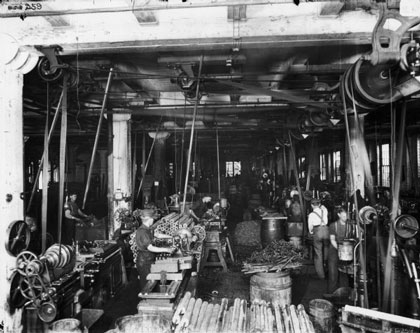
Factory Workers at IHC
McCormick Works
1900 -- Chicago, Illinois
Dad's
physical,
emotional, and spiritual absence of heading the family unit, commenced
a generational decline, away from equipping his offspring to be: explorers
of individual purpose. The descent would spiral deeper throughout
the generations of the 20th century.
"We have not come into the
world to be numbered; we have been created for a purpose; for great
things: to love and be loved."
-- Mother Teresa
Without a
purpose,
some of these adult children were susceptible to a wide array of
ideology.
An external
ideology
also thwarting individual purpose was gaining acceptance
during this same period: Darwinism. English naturalist Charles Darwin's
study on "natural selection" theorized that human beings are not
intelligently designed. Darwin concluded that humankind was a product
of random evolutions, which have gradually morphed or became extinct.
(Hitler -- a Darwinist, chose to speed up the extinction rate, to
create a master human race.). Darwin's theory of evolution rests
on the still unexplained division of just one single
celled organism. Evolution theory is further developed by the
phenomenon of cells magically merging together by some other unknown
force. Some believe it was lightening, or a cosmic blast causing the
first merge.
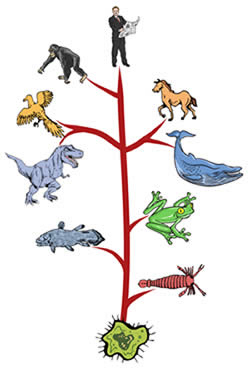
As the age of
invention progressed, certain groups began following this new
"explanation of species origin" with faith-like zeal. Doubters of the
theory point to evidentiary wide gaps in the species types as well as
the astronomical leaps of the "human mutation," characterized by:
faith, ethical awareness, self-consciousness...but I digress).
Observers on both sides contend: Evolution requires an enormous amount
of faith, due to the infinite number of "random" mutations missing
in evidence, both in past archeological and present day evidence.
Also
contributing to
the faith requirement of evolution: the absence of 21st
Century knowledge. Had today's knowledge been available to Darwin, his
theory would have to explain the origin of all of the infinitely
complex yet necessarily perfect DNA chains to sustain cell
life. One other coincidence: each chain conspicuously resembles
software code, (no duplications, whatsoever). His theory also
could not consider the undiscovered --bio molecular sciences,
in which cells whose
operation conspicuously resembles human engineered motors
-- really, really, good motors ...motors which science today claims are
the most superior ever known. Considering a very liberal 1 billion
years, for these properties to slightly mutate to the present day human
beings, this is random chance at its miraculous best.
Darwin
prophetically
states:
"If it can be demonstrated
that any complex organ existed, which could not possibly have been
formed by numerous, successive, slight modifications, my theory would
absolutely break down."
"The
Origin of Species" Page 171
--
Charles Darwin
PART
II - "CUTTIN' THE RUG" --
THE NARCISSIST
DREAM

1915-1929:
1)Invention, economy, and meta-physical powers incite culture.
2)Personal Responsibility evacuated for self-indulgence.
3)Hollywood, "Faith" based leaders, and Avante-gard circles lure
masses into manufacturing reality.
In the early
1900's
as the Industrial Revolution morphed to Modernism, it seemed humankind
had "made it"....and boy, were we riding high! Our world became
symbolicly rich, where ideas based on theories and principles could
create extradordinary results. From math, to science, psychology,
to liberal arts, the symbols out of these disciplines ran the modern
age. Businesses, inventions, social movements, and scientific theories
grew exponetially. We could do and make
anything: automobiles, electricity, air-conditioners, airplanes, even
motion pictures. This celebration climaxed with the Roaring Twenties,
(1920's). "In the mornin', in the evenin', ain' t we got fun?..." was
the mantra to fill the dance halls, where people would dance until the
sun came up. Some circles already disillusioned with the limits of
science and the world of absolutes, had begun to experiment with a new
found luxury: expressing their ideas in a fanciful, self-absorbed way.
Writers like F. Scott Fitzgerald (1896-1940), were natural literary
leaders of the time, with fantasies of individualized self promotion
themes between their pages.
>

F.Scott Fitzgerald,
"The Great Gatsby" 1925
Some were
lured
into socio-psychological
faith performances : a hybrid Hollywood/"healing"
exhibitionism, peddled by megalomania personalities such as Aimee
Simple McPherson (1890-1944). McPherson was the first mass media
evangelist, and the first of such to fall from scandal. The staggering
revenue drawn from such dramatizations would be modeled by the next
three
generation of religious racketeers to rehash these manipulative
techniques into the world-wide Signs and Wonders Apostasy, circulated
into the later 20th Century.
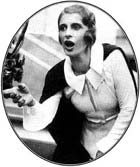
Aimee Simple McPherson
Hollywood, California
New
Thought/Metaphysical concepts of "speaking your own world into
existence", and "positive thinking" flourished along the eastern
seaboard, and particularly in Boston's Ivy League circles. This New
Thought movement, a kind of super-charged humanism, believes
that human kind is basically "good" at its core, and to date continues
to morph its way to depths beyond reason. These early 20th Century New
Thought thinkers were the fore-runners to Postmoderns in the late 20th
Century.
PART III -- THE FIGHT
ABOVE/
THE RUMBLING BELOW

The Great Depression
1929-1948:
1) Media and philosophy manufacture "escapisms"
during chaotic times.
2) Depression ravaged country demands revolutionary big government to
manage Modern era's growing pains. Federal bureaucracies expand, with
establishment of: work programs, welfare, social security, etc.
3) Indifference to sacrifice: an experimental expression begins within
underground New Thought circles.
4) Social Sequestration is made possible by combination of urban
population explosion, and governmental dependence.
Never before
had the
United States government expanded to the levels it did during the Great
Depression. Citizens turned to President Roosevelt's "New Deal" put
them back to work. By this
time, it became clear: many struggled in the new symbolic world of
ideas, finance, and leadership. The
depression called for a much more powerful government to relegate
commerce, jobs, retirement, unemployment, and more. We begin to see
heroes being born out of the youth of this era. These youth are now
known as The Builder Generation. The Builder Generation was
determined to press in to scrape what they could for their
families, sacrifice beyond our understanding, and get America back to
work. The depression would be just the beginning of the Builder
Generation's long mid 20th century struggle.
American
fears and needs were extoled in MGM's literary metaphor the
1938 film production of the Wizard of Oz. The country identified with
the missing pieces of themselves, (which were really still there all
along), and longing for a place
far away from their troubles...over the rainbow.
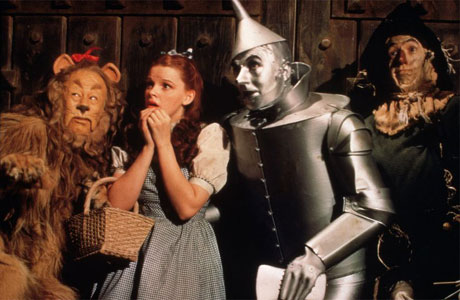
The movie
industry was one of the only industries thriving during the
Great Depression, as troubled folks could escape their problems for a
brief
two hours, and only for about a dime.
The truth was
unfolding: It became painfully obvious since the industrial revolution
that society maintained a consistent split perpetuating from one
generation to the next: 1) There were those who could negoitiate
through the symbols of the
new modern world, such as letters, numbers, literature, speech, music,
and social code — and
2) There were those by whom this abstract realm eluded them. The
latter group -- three generations into the future -- would be computer
illiterate.
And an entire
geo-political product was birthed. President Roosevelt was
compelled to move the United States toward a socialistic
collective to save it from collapse. In other countries moves like this
were very common as they experienced the same unequal grasps of the
symbols in modernism.
Many looked to a strong centrist governmental control as the broker for
equity.
   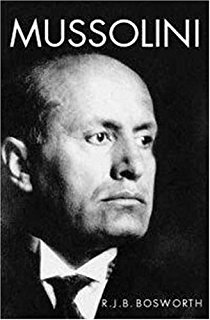 
It
didn't
work. The politics of attempting
social equity eventually would decend into historical “cultural
warfare,”
which came with the criticism of encouraging coveting or envy between
classes and ethnicities. Such regimes' social targeting,
isolation, and genocide -- all to "purify" social thought
reform -- was justified by believers, but frowned upon by
humanity.
Yet, in the
early 1930’s something had to be done. All people matter.
And an entire group were disenfranchised from the modern world’s
abstract
functioning, left without jobs, retirement, homes, food, or
income. What does the world do when most countries revolted
against the old monarchies in favor of democratic freedoms? But now, freedoms
billowing into complex systems way over-the-heads for many? What do
people do when nation-wide choas strikes? They always re-think the relationship
between their govenrment and its people.
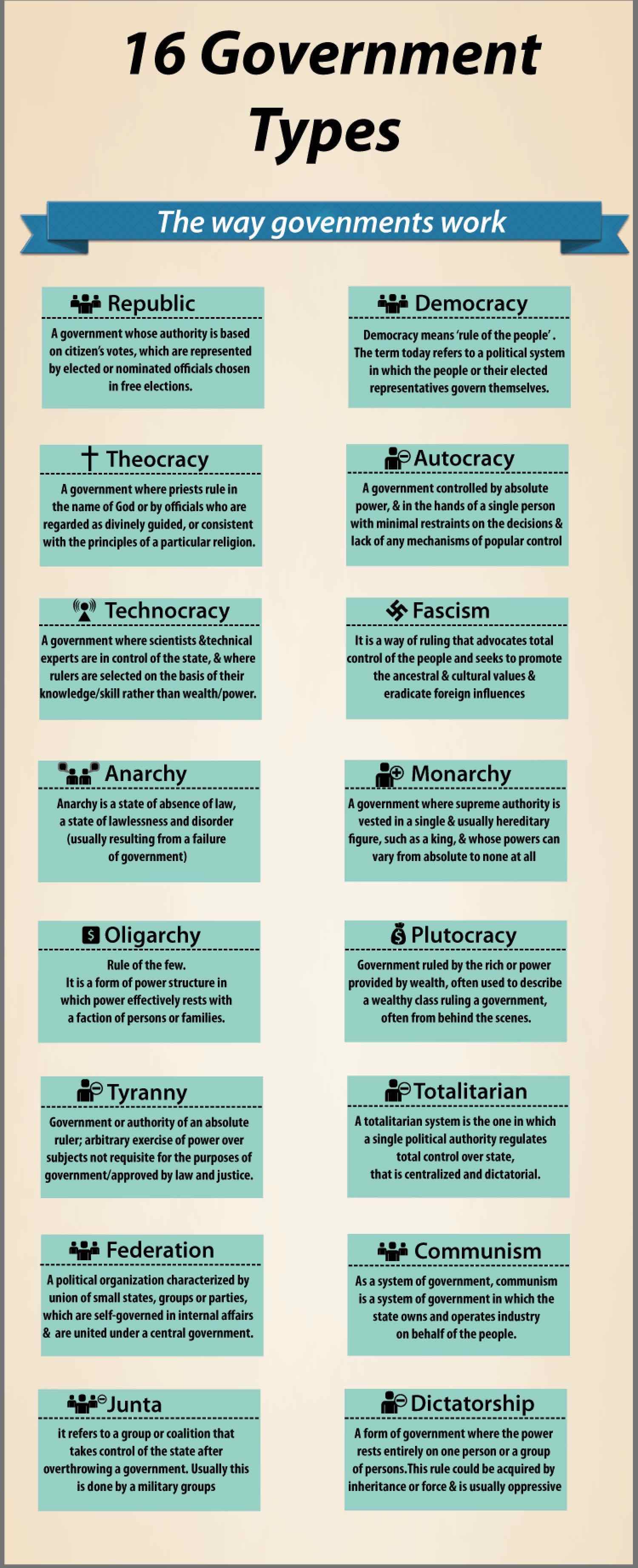
(Click to enlarge)
In this era
of the Great Depression, we see people everywhere getting comfortable
with government's new
mammoth role for the modern era. Individual citizens quietly add the
government to their corporate/industrial support system, while
still accompanied to a certain extent by family and community.
How does
government dependency factor into postmodern thought? Simply that,
individuals and families are now facilitated to be less personal and
local responsibility, by leaning deeper into outside and
impersonal forces of the federal government for care. Although this
time period finds most folks still practicing tremendous virtues of
interpersonal responsibility (rallying to one another's needs), the
accountability escape hatch was widening with each decade, revealing a
hologram of a social entitlement society on the other side. (Following
WWII, some politicians, itchy to cast the lure, would morph this new
terminology for "big government" into the term "entitlement.").
Roosevelt's New Deal summonsed a dramatic controversial shift in
dependency, as compared to the interdependent family described at the
beginning.

While the
Builder
Generation was A) Fighting for necessities in the depression,
B)Fighting totalitarian advances toward the U.S. and Europe in WWII,
and C) Fighting to save the world from communism during the cold war,
(Yes, they had their hands full, and we owe them a HEAP of gratitude!),
the reclusive New Thought philosophers were incubating their agendas,
burrowing themselves in a comfortable modernism oustide the chaos.

As
people began allowing technology, government, and corporate caretakers
to assume our personal matters
New Thought pioneers languished in private social sanctuaries, beneath
a modern age cocoon, sequestered from the growing world tensions of the
1930's and 1940's. Where once small town folks of wide eclectic
backgrounds relied on each other for support and interaction,
urbanites' now relied on impersonal agencies, allowing them to
annonymously live their lives, without the rich broad
sampling of community interaction found in smaller communities.
So why would
anyone
want to eliminate a broad cross-culture for social stimulus? Many
urbanite followers of New Thought enjoyed conveniently select
relationships "buffet style", simply based on
the sheer numbers of their city's population, presenting a higher ratio
of like-minded thinkers. The modern age offered New Thought urbanites
this luxury of social sequestration with little
accountability to rest of the city population. These tailor-made
communities were a broad departure from the interdependent community in
the late 1800's. (The
urban social sequestration began the hallmark social delusions
embodying later Postmodern subcultures.) Social sequestration
began seeping into the myriad of hues and lines across all New Thought
expressions, reflecting a less multi-dimensional reality.
This simplistic
dimensional outlook was mirrored by New Thought artists as some began
experimenting with abstract, somewhat cartoonesque art. It looked
"day-to-day." Not too provocative; somewhat whimsical; In some works,
edging toward satirical; It evoked...fun.

Copeland Charles Burg
(American, 1895-1961),
“Rhubarb and Two Oysters”, c.1942
Furthering
the
escapist folly of New Thought's suspension of reality, writers began to
emerge such as Ayn Rand (1905-1982), heralding such book titles as:
"The Fountainhead"(1943). Rand and her contemporaries marveled at
man's ability to
create a modernistic society. The book's title refers to Rand's
statement that "man's ego is the fountainhead of human progress."
Ironically, her philosophy is published right when the egos of fascist
leaders led six million Jews to death, and engaging a wars against the
world for
totalitarian gain.
The book casts
the
main protagonist, who is Rand's idea of the ultimate man, living for
himself and his own creativity, indifferent to the opinions of others. The
Fountainhead, was originally turned down by six publishers. By the
time it gained publication, the book eventually sold several hundred
thousand copies, and is still in print to date. The book became a
Hollywood movie with Gary Cooper, laid the foundation for Rand's
man-centered religion, ironically entitled: Objectivism.
Objectivism's appeal enticed the fundamental nature of man striving to
be a god. She borrowed several ideas from science, psychology, and
sociology to justify her position:
"My
philosophy,
in essence is the concept of man, as a heroic being, with his own
happiness as the moral purpose of his life, with productive achievement
as his noblest activity, and reason as his only absolute." --from the
book "Atlas Shrugged" -- by Ayn Rand
The descent
from
altruistism dropped further in other circles during this
period.
Psychologist
B. F. Skinner's (1904-1990) behaviorism
theories, derived from animal experiments, were projected toward the
motivation of
humankind. The behaviorist message: that humans were solely a product
of their environment's stimuli and response processes. Behaviorists'
denial of human purpose, goals, curiosity, and morality further fueled
the denial of individual
purpose. Behaviorists actively propagated what they believed as
the ultimate engineering for humanity: a programmed utopian society.
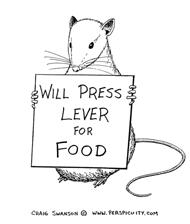
English
writer
C. S.
Lewis (1898-1963), inspired by the world at war, argues against New
Thought ideas emerging from underground. Lewis critiques New Thought
concepts, as an ancient repackaging of man attempting to be a god,
for
the modern era.
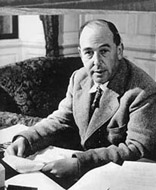
C. S. Lewis
Lewis
attempts
to
correct the inward social spiraling
using
rationale
in several of his fiction and non-fiction books. His main
treatise: that morality is not relative, rather a common morality
is inate in each of us. However,
New Thought thinkers rejected Lewis' works. Particularly on Lewis'
points of personal accountability, New Thought thinkers were too
fascinated by the ever changing colors under their feet.

So ignorant
to
the
world at war around them, this small band of New Thought thinkers
embarked on an audacious social expression, something that would later
characterize the cynical nature of this movement: They practiced a bold
indifference to personal accountability, to thwart any threat
of outside manipulation distracting them from their goals. Part of the
New Thought
"fragmented" outlook encompasses a curious "in the moment" tunnel
vision, blinding the New Thought thinker to present and historical
sacrifices, which would normally be reciprocated with gratitude and
compassion.
Up to this time in history, the
virtue of sacrificing oneself to help another brought with it honor,
respect, and a virtue worth
regeneration from one generation to the next. However, underground
philosophical views were beginning to surface during the heavily united
World War II effort, where the attitude of altruistic respect for sacrifice
began to drift toward a self edifying posture of entitlement.
Some point to parts of Western Europe, where the
seeds of this particular Post modern attitude began: "If it is someone
else's job to do the dirty work for me, and they want to do it, what
does that have to do with me?" This anti-logic was due in part to the
fragmentation (or compartmentalization) of societial issues on
virtually every
level, a pattern that was rapidly encroaching on people everywhere in
the modern world.
PART IV -- THE
POSTMODERN REVOLUTION

1948-1973:
1) Sudden prosperity brings hollow purpose to children with unavailable
parents.
2) "Mediaemotion"/convenience driven society allows virutous principles
to be usurped from the classrooms.
3) Propagation of "moral relativity" begins to spread widely.
Not only did
New
Thought thinking survive the internationally united WWII effort, once
the war ended, the stage was set. New Thought thinking
exploded into our society as Postmodernism. Sociologists point to the
ending of World War II when The Modern Era began a full retreat,
replaced with The Postmodern Era. During the 1950's the average citizen
was weary of fighting, a depression and a world war. In 1948, United
States movie goers witnessed on the "News Reels" -- the most vivid
results of a cooperative scientific/military effort from our
establishment: the creation and detonation of two Atomic Bombs over
Hiroshima and Nagasaki Japan. America had been fighting and clawing for
several decades to survive and suddenly -- victory in 1948.
Virtually
over-night,
financial prosperity was back. Jobs were plentiful, and consumer
spending was up, as the aerospace industry boomed. The work force was
helping to fight a new kind of war, the "cold-war". The cold-war
starred the super-power nations divided into primarily two camps with
Democratic / Capitalistic nations on one side, and
Socialistic/Communist nations on the other. The battleground, (with the
exception of Korea and later Vietnam), was held on the frontier of
ideas, propaganda, and the stockpile of threatening military might
between super-powers. We were on top of this new world game, and we
could now play it from the comfort of our offices and homes, for a
while...
"I've
got
the
world on a string ...
sittin' on a rainbow....
got the string around my
finger...
what a world, what a life,
I'm in love!"
(Lyric from:
"I've
Got the World On A String"
Sung by -Frank Sinatra Recorded At Capitol Records 4/3/1953)

By the
1950's
people
were ready to stay home, exhale, and attempt a carefree life distant
from the strife of war and financial depression. This attitude showed
in the themes of the then --new larger than life "media-emotion".
Because of
technological advances, media such as stereophonic music, contemporary
novels, multiple television channels and shows, cinemascopic movies of
many genres, and magazines on countless topics, -- all such media
became quite diverse, more available, packaged according to the ever
widening tastes of all socioeconomic lines. People at this time regular
folks began creating their own reality, vicariously living through
their customized world of favorite media, and often at the touch of a
button,(later -- through the home computer). A wide pool of tremendous
talent such as, Frank Sinatra, Truman Capote, and Lucille Ball,
provided each sector of society their own "escape de jour". The blithe
domestic attitude was glorified in such television shows as I Love
Lucy and The Honeymooners. These were the dynamics of
many 1950's homes.
Because of
postmodern
media's own over saturated cliches´, media parody, (a postmodern
staple), became in vogue. Commercial art took on the Postmodern staple
of iconic figures, with a blend of abstract and cartoon simplicity --
all feeding into the "feel good for the moment" mantra the western
world was gobbling up.

"Unnamed"
By Andy Warhol
(Commenting on the repeated,
random, and empty signals
bombarding the public)
For the then,
two to
three generations of growing underground leaders of Postmodern thought,
it was becoming increasingly difficult to tolerate issues that required
a larger perspective beyond their fragmented micro cultures. Subjects
such as God, sacrifice, evil in humanity, and war, did not have a place
for the postmodern ideals. So, as the malaise of consumer consumption
soared, these leaders used the nation's prosperous distractions as
their chance to advance publicly. Between 1948 through the present,
postmoderns began propagating on a national level their new philosophy.
Postmoderns chose the United States Courts as their mouth piece.

Advancing the
practice of a fragmented reality, attorneys lifted a concept
penned: "separation of church and state" from a
Thomas Jefferson letter,
entirely reversing the letter's context. The objective of
twisting Mr. Jefferson's intent, was to aide atheist leader Madalyn
Murray O'hair and the American Atheists' endeavor to eradicate school
prayer through the Murray vs. Curlett case of 1963. The sound bite:
"separation of church and state" based on the new erroneous foundation,
along with words such as "offensive" all were used to conceptually sway
the mind set of American life where faith and free speech are
concerned. The postmodern solution? Compartmentalization of faith
instead of the Bill of Rights "free practice thereof."
"The
last stage but one of every civilisation, is characterised by the
forced political unification of its constituent parts, into a single
greater whole."
-- Author, Arnold J.
Toynbee
"A STUDY OF HISTORY" 1957
PART
V: BABY BOOMERS, THE FIRST POSTMODERN GENERATION

1963-1975:
1) Children of prosperity rebel against shallow upbringing.
2) Boomers begin experimenting with isolated sub/micro-cultures, as
they crystallize post-modern doctrines.
A new
generation was being raised within these events.
That generation is known as the Baby-Boomers, named after the"boom" of
birth rate right after American soldiers returned home from World War
II. Baby boomers did not relate to the enormous sacrifices their
parents and grandparents made earlier in the century: financial
sacrifices through the depression, their very lives during WWII, and
their physical and intellectual defense build up through the cold war.
Rather they received for the most part an empty shell of consumerism
throughout the Prosperity period of the 1950's and 1960's.

For many
homes, the
art of instilling purpose was several generations now --long gone. The
world's tense affairs, along with the
corporate ladder had so pulled parents out of their interest in the
home, many parents of this prosperity movement did not know how to
"stoke the home-fires", by building strength through the home, or
encouraging the unique qualities of their children. So shocked by the
atrocities of World War II, those parents raised their boomer kids in a
world of conformity. Their postmodern world echoed a highly
predictable sanity, certainly echoing the unity that won the war.
While the cookie-cutter uniformity was practiced by the children of
1950's and 1960's prosperity, for many the uniformity did not take root
with any pertinent meaning.

1950's Suburban Tract
Neighborhood
The virtue of
instilling human purpose was nearly three-quarters of a century in
decline. Many
prosperity age parents sensing their home needs, could only attempted a
veneer of imparting real purpose into their children.
The family headship had long forgotten how to relate the authentic
heritage and reason behind their fore-fathers' focus.&
Parents instead hobbled along, leaning on traditional practices without
properly conveying their meaning. nbsp; Even the 1950's-1960's
tract
home neighborhoods had an eerie sense of military housing from -- yes,
a borrowed design of uniformity from WWII. Again, the mentality
of these neighborhood designs did not translate to the post war
children living there.
Instead of dynamic
interaction with one another, families leaned on third party mediums
such as television to pass evening time.
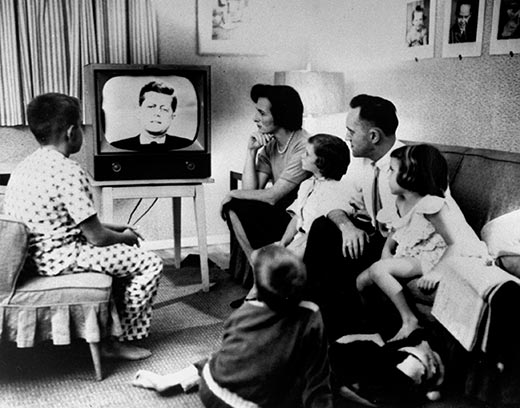
Many boomer
children in there later years
bonded with one another, discovering their apparent vapid upbringing.
The public school system attempted to
fill the void, but remained institutionally distant from the deeper
needs of these prosperity era children.
The one father
figure
during this period, whom gave baby-boomers a sense of hope and purpose
was President
John Fitzgerald Kennedy. During his term from 1960-1963 President
Kennedy attempted to turn the consumer mentality around, with his
memorable line:
"Ask
not what your country can do for you; Ask what you
can do for your country."
... a
quote clearly out of order with
post-modern thinking. Kennedy's exhortation was purposefully designed
to re-direct the
country's thinking, particularly those who unwittingly made government
their care-taker. JFK had nobel and ambitious ideas to usher the United
States
by advancing modernism, (not post-modernism). It was an era he called The
New Frontier. His ideas were exciting to many. JFK's ideas of
sending people to the moon, and developing modern wonders to advance
civilizations around the world, all captured the imagination of the
scientific community, and many young people, quietly searching for
purpose.

President and Mrs.
Kennedy
(back seat).
Moments before assassination.
November 22, 1963 --Parade through Dallas, Texas
JFK's
assassination
and martyrdom thereafter, triggered the beginning of a social
revolution, led primarily among Baby-boomers. Due to the
assassination's
social shockwave of cynicism and mistrust, some historians site the JFK
assassination as the actual propogation of world-wide Postmodernism.
Those historians would say that JFK's
assassination was the single most impactful event which ushered the
largest shift into post-modern thinking, (ironically a move in the
opposite direction JFK intended). If the seeds of postmodernism
were scattered in the earlier decades, they took the largest public
root on November
22, 1963.
During the
1960's
climax of racial discrimination and segregation against minorities, Dr.
Martin Luther King Jr. was the most prominent leader of hope for
America's long over-due promissary note of social freedom.

Speaking
eloquently to all Americans, Dr. King's message of social equality for
all, (not just blacks) resonated with those who valued the American
prinicple: that "all men are created equal." (Thomas Jefferson, from
The Declaration of Independence.) Dr. King's biblical convictions on
God's love, propelled his advocation for peaceful demonstrations, of
which sent shockwaves around the world. His most memorable vision was
shared with America in 1963 within his "I
have a dream..." speech at the Lincoln Memorial rally.
There he described an America of the
future, which does not judge persons by the color of their skin, rather
by the content of their character. In 1968 during the prime of his life
and ministry, Dr. King was assassinated on a Memphis, Tennessee hotel
balcony.
Kennedy and
King's
assassinations further wounded this lost generation, subsequently
unearthing a deeply disturbing dilemma in social America: the now decades
old perpetuating loss of purpose. With the widest disconnect from
the generation before them, and post-modern thought growing
exponentially, baby-boomer's discontent began to be magnified on to a
number
of individual issues, (government conspiracy theories, Vietnam,
inequality, civil rights the environmental issues, etc.). For the first
time in their lives, many felt the euphoria of rallying around various
causes, fighting to correct social injustices and fight what many
labeled as "bad tradition."
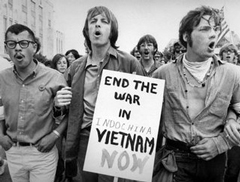
But their
seeking of
purpose did not stop at their virtuous attempts to correct some obvious
social/political wrong doings. Trying to shake their malaise of
being raised in a purposeless void, baby-boomers were willing to be
led into a wide array of experimental, and sometimes senseless
environments. Many wandered into drugs, cults,
rock-and-roll, and sexual exploits. In their experimentation, Boomers
acquired the
nick-name: The Counter-culture.

The rebellion
swiftly
exploded in protest against the United States government for its
questionable and
poorly strategized involvement in the Viet Nam War. Boomer's rage would
further project itself onto the Watergate cover-up.
Albeit some
people
refer to them as the spoiled brat generation, Boomers were
none the less a very hurt generation. In the face of repeated
disappointments, Boomers in their rebellion walked directly into the
hands of Post-modernist philosophers. Desperate to escape it
all, while following their New Thought fore-runners practices,
Boomers were vulnerably led to accept the widely paradoxical shifts of
postmodern mantras. Some became unstable adults, filling
psycholoigsts' offices. Practioners dealt with (or played into)
their patients confusion, and sometimes disillusionment between the
alternative realities they chose to embrace...
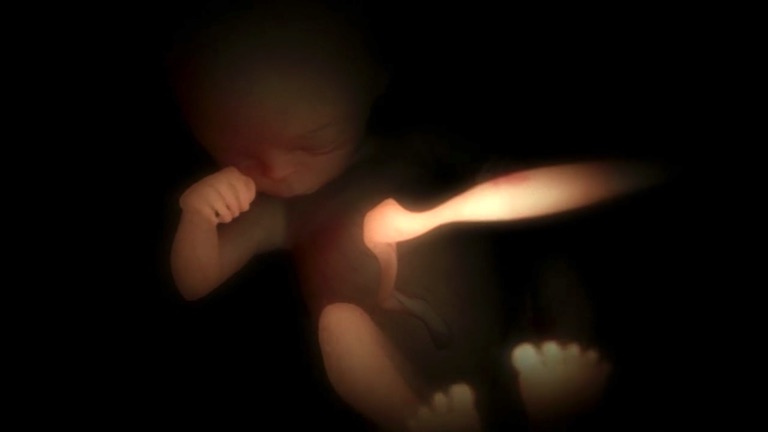
One of the
most
horrific dividing lines of the postmodern culture loosing awareness of
reality and
accountability with
one another, is the accepted loss of accountability within the most
fundamental human trust: between a mother and her
unborn child.
Sociologists
trace
the maternal-child trust loss through the teachings of early
20th Century abortion activist: Margaret Sanger.
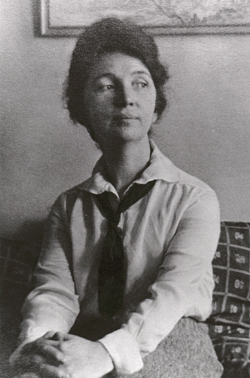
Sanger's
"Negro
project" attempted to diminish ethnic babies in urban areas -- by
promoting abortions and steralization to those
with "objectional traits:"
“We
are paying for,
and even submitting to, the dictates of an ever-increasing, unceasingly
spawning class of human beings who never should have been born at
all.”
– Margaret Sanger.
The Pivot of Civilization, 1922,
pages
116, 122, and 189.
Swarthmore College Library edition.
“Birth
control must lead ultimately to a cleaner race.”
– Margaret
Sanger.
Woman, Morality, and Birth Control.
New York: New York
Publishing Company, 1922,
page 12.
Sanger's
racial
cleansing doctrines, (predating Hitler, but Dawrinian influenced) along
with the succeeding mantras of ones like
Gloria Steinem could not rationalize the abortion
procedure as it related to the big picture: that picture being the
obvious dependency of an innocent child
in the womb. The narratives were carefully tailored soundbytes,
fragmented on the issue to be soley about
the power of women. And they worked. Clinical abortions are rarely
about women's health, other than
deterring a determined mother from killing her baby with a wire hanger
or in back alleys -- highly unlikely today with available humane
alternatives for the life of the child.

Rather the
feminist
narrative thrusts a narrow band of hyperbole and histrionics, primarily
based on the same hatred lodged from its historic roots: a resentful
undertone
of retribution against men and children: the very forces they claim
"enslave" women to motherhood. Terminating unwanted pregnancies
became a commodity for postmodern's value of: creating (or
"un-creating"), one's own reality, despite the horror of what the
procedure does to the life needing his/her mother. As the
issue
came to a political decision in the early 1970's, one manifestation of
the Postmodern moral relativity agenda was to use irresponsible sex and the
concept of
"life" itself -- as legitimate game pieces. To choose whether your
unborn baby lives or dies became an intoxicating power among the
feminist sub-culture. Pushing the
"option" of terminating an unborn child's life -- itself has become a
cultural commodity brokered by political operatives attempting to
hi-jack a whopping one-half of the voting block: women.

What once was
considered to be a nurturing/protecting role of mothers, now mothers
to-be were duped into wielding a false power against their babies;
lured into a
politicized self-absorbtion where the
pregnancy was concerned; and even with adoption options, many mothers
tragically choose to rid their bodies of their
nine month inconvenience.
The abortion
issue
today remains
a postmodern phenomenon. The movement is held in place by a
compliant public
tolerance. Our tolerance is held in place by a very shrill
sub-culture's fragmentization of this
large social issue -- far too large to be fragmentized.
Fragmented/partial narratives of issues are purposefully myopic to
promote the sub-culture's desire, and not the reality surrounding the
issue. In this case, femenists fragmented the issue: The miracle of life, and when life
really starts. Innocent Unborn human life
--medically referred to as "tissue" when pulled or suctioned from its
mother's
womb--, has been marginalized as "a choice," as abortions up to seven
months of pregnancy became legalized in 1973 during the Roe
vs. Wade Supreme Court case. Today, people describing the procedure
for
what it is will easily be labeled "fanatics " or "insensitive" toward
women caught in a "very difficult
position."
If you are on
the
fence, just not sure if abortion should
remain a legal sanction for the sake of anyone's "difficult position",
go to Google, click on Google's "Images" tab, and type in"abortion".
(You have the "choice" to know.) Abortion Alternatives are
here.
<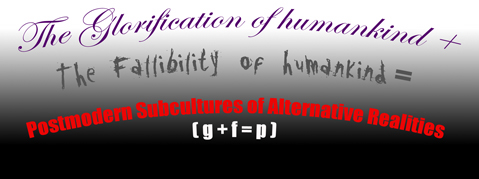
_________
"Imagine there's no heaven,
It's easy if you try,
No hell below us,
Above us only sky,
Imagine all the people
living for today...
Imagine there's no countries,
It isn't hard to do,
Nothing to kill or die for,
No religion too,
Imagine all the people
living life in peace..."
-- John Lennon,
lyrics to
Imagine
_________
Don't bother
us with protecting children and their future. Dump
diversity. Never
mind: "Vive la différence." This lyric above, nestled
in a mellifluous pop melody is the
anthem of most
unwitting Postmoderns. The words represent the central core of
postmodern faith. Many post-modernists are in lock step pursuit of the
principals
in the song: Imagine. And it promotes:
1) (The
paradox of) Peace without price.
(or any blue print to deal with
tyranny).
2)
Living for
an experiential present,
denying historical lessons of humankind's
nature.
3)
Dissuasion
in the belief in an afterlife.
4)
Dissuasion
in belief beyond sight.
Their rule
book: if
you believe differently from us, keep it to yourself; you ARE the
problem. Their thinking is facist. Fascism has no political
boundries. Not quite the care-free loving society they appear
to promote.
As
postmodernism
attempts to blur good and evil, the true reality is: life
and its value begins to appear as grayscale -- where diversity is
shunned, hope is abandoned,
a "purpose de jour" is
hauked,
passion is forceably cooled, and sacrificing for The Beautiful is hard
to find. Many
victims of
postmodern thought have been programmed to simply exist -- "living for
today"...only...just as the song goes.

Paul Armstrong's "Sad"
__________
"...Well, it's a cold, cold,
cold,
cold, cold, cold, cold, cold
Post, postmodern world
No time for heroes, no place for good guys
No room for rocky the flying squirrel...
It's a cold, post, postmodern world
No authenticity, no sign of soul
The radio won't play George and Merle..."
...Well, it's a cold, cold,
Post, postmodern world
no place for sentiment,
no room for romance
Bring back
the Duke of Earl"...
-- Don Henley, lyrics to:
"They're Not Here, They're Not Coming"
__________
With virtuous
values
now relegated as cynical museum pieces, Postmoderns turn to a different
mantra altogether. "If it feels good, do it...", values were heralded
by pop psychologists:
the new gurus for this society.

Best seller
books
such as,
"Looking Out For Number One", were widely embraced, as the new accepted
center of behavior. People in media, politics, special interest groups,
businesses, schools, and families followed.
As these Post-modern stresses spread rapidly throughout society, its
self-indulgent thoughts
began a systematic death upon the family unit. The pain for Boomers was
exacerbated as the thin veneer of purpose in homes and self-pursuing
interests buckled the union of a husband and wife into divorce. Divorce
rates climbed to unbelievable percentages by the latter half of the
20th century.
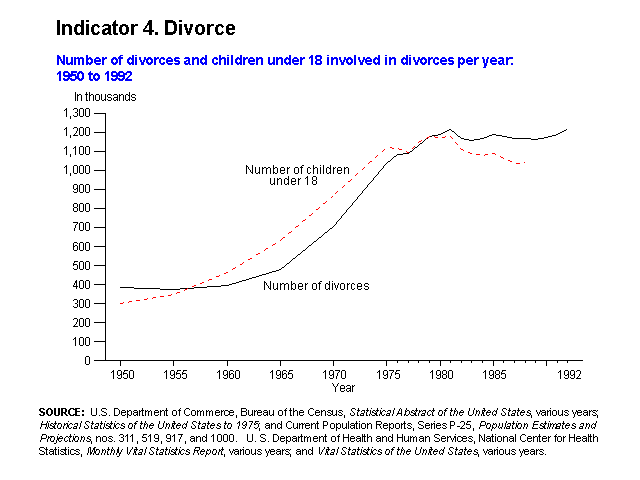
The divorce
pattern
began to be passed
from one generation to the next. Love and fidelity became a part of
post-modern cynicism, worsening with each generation of divorced
kids. With the family unit rendered incompetent to instill values
to their children, many turned to gangs and warped subcultures -- whose
mission was to point fingers and hate against one another.

PART
VI: THE NEW MILLENNIUM
Conncecting Our Sub-Cultures to Save Our Future

1975-Present:
1) Self creating realities further indulged through
computers/tailor-made media/information age.
2) Sub-cultures deny history, based on present day "feelings,"
discarding historical documentation.
Remember the
story at
the top: "A BETTER TIME." It took less than 100 years, for that way of
life to all but disappear. Although we have rightfully come a long way
in trying to treat all people equally, can any civilization governed by
the
citizenry hold itself together with individuals gravitating toward
isolated sub/micro-cultures? Usually not. When people feel their
sub/micro-culture should have preferential entitlement, they will blame
the system for not receiving entitlement, and subsequently, not support
the system. This is an arching phenomenon just prior to the fall of
any culture.
During the latter 20th century, on an
international spiritual leaders like Dr. Martin Luther King, C. S.
Lewis,
Evangelist Billy Graham, and Mother Teresa were all reaching out
with relevant messages -- calling out to these isolated sub-cultures.
However most local churches in the late 1900's
retreated, ill
equipped or unwilling to reach out. Many local churches succumbed to
the tide of isolationism, giving
their primary attention to their own respective membership on
their role. Ironically, such religious groups created their
own individual sub-culture.
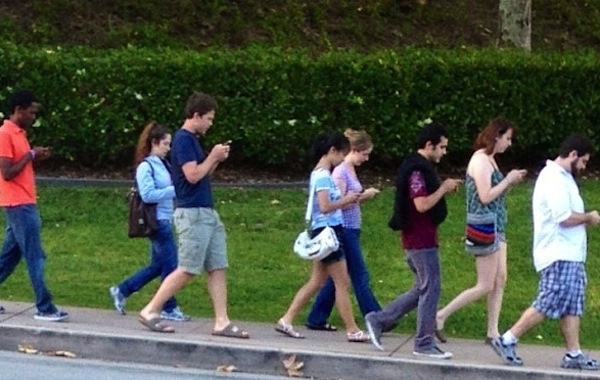
Further
frustrating the walls between us: Texting, social media, and tailor
-made sonic realities. Earbuds and smart-phone made alternative
realities portable and on the go escapism. Millineals on average
struggle with verbal and non-verbal communication more than any recent
generation. Many have become addicted to sequestering behind alternate
personalities crafted on-line, versus developing their natural
personality intended for more authentic intimacy face-to-face.
Working to Connect
There is no
need to
slam away at the Postmodern subcultures. With their sometimes comically
contradictory positions,
it is understandable
how
some poke fun at these groups, even projecting personal
frustration. Nonetheless, to share proper perspective of just one
sub-group's shrill
tone, consider postmodernism as the foundational premise for all
such sub-groups. By understanding the big picture of post-modernism's
direct role in
fragmentizing so many parts of our society, we have the proper
perspective of seeing these groups as many little pieces in a vast mosaic.
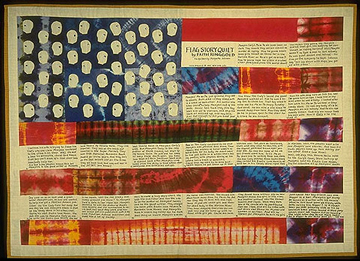
Faith Ringhold's "Flag
Story
Quilt"
1985
It is
critically
important to remain in clear view of the big picture, when
communicating positive change.
Contrary to
postmodern's moral relativity, there is nothing insensitive in
peacefully explaining why you disagree with a philosophy people attach
themselves to. The key to effective change, is describing an effective
model to change toward. I used the Mayberry like town in "A Better
Time" in this article as the
model to demonstrate where we have come, (albeit, we will likely not
return to that pre-modern setting again). Political correctness should
stop, and we should open our mouths and our arms in love and
understanding for one another. In reaching out, effective communication
also
includes publicly reasoning through the destructive
postmodern dynamic -- along with its roots, --and always offer the
better anecdote.

To cut
through
the
jabberwocky, this reason/anecdote formula should be
so thoroughly thought out, it's essence can be roped into a "truth"
sound bite of 15 seconds or less. Why work a summary into a soundbyte?
The soundbyte is the open door to a deeper discussion. In a post
modern society, the soundbyte is the figurative
crack in the closing doorway, which Indian Jones narrowly slips
through. If we don't take the time to ignite ideas in the language our
culture will understand, fickle post modern ears will close quickly.
For centuries,
the
reason/anecdote method has been effective in changing lives
toward a better way not only in faith-based circles, but in the public
arena of ideas as well. Freedom of speech or not, a loving heart goes
much farther to tear down the walls at hand.
That being
said,
there is something very wrong, in holding a prejudice against
individual postmodernists. We don't know
why each person is on the road they are on. Take for example, the guy
above wading in the polluted waters at Woodstock. We now know by
historical interviews, that many following antics like his, were
motivated by peer pressure, loneliness, rebellion, drugs, and/or a need
to sensitize their lives. Gatherings of people who "party" like this,
rerun over and over throughout history. We've all sinned, or have had
the sins of others affect us. As a result, we all fall short of our
maker's glory. For interpersonal success of this mission,
individuals must
be approached with understanding and reasonable persuasion in
God's love. This means we each
have to be teachable by those we listen to.

It is
society's
lack
of understanding of these Postmodern individuals' much deeper
needs, all of which drive them to self-medicating
agendas to begin with. Arguing or dogmatic rhetoric with
Post-modernists will only drive them further into isolation.
...a
simple
plan for change...
"Teacher,
which is the greatest commandment in the Law?" Jesus replied: 'Love the
Lord your God with all your heart and with
all your soul and with all your mind.' This is the first and greatest
commandment. And the second is like it: 'Love your neighbor as
yourself'. All the Law and the Prophets hang on these two
commandments."
Matthew 22:36-40
SEARCH,Study,
Recognize...then,PREPARE.

Here are some
preparation tips for reaching those hurt by postmodernism.
1) STUDY AND
PRAY:
Some of the finest world leaders from all religions study well and
pray. They use their insights to build bridges between
people. Study and pray that God would bear fruit in you,
and it would be noticed. Pray you would
be spiritually sensitive to the right time -- when the person of
interest would be most receptive to hearing your heart.
2) LISTEN:
Postmoderns have a story. We've all had reasons and choices in filling
the void in our lives, and so postmoderns have their reasons and
choices as well. Listen intently. Ask God to give you discerning ears.
Many reasons are used to justified the Postmodern cultural mandates.
Their reasons for living a postmodern lifestyle will likely include:
A)
Turbulent
demonstration of purpose.
B) Turbulent or unavailable family history.
C) Accountability issues.
D) Innocent misalignment of logic-based ethics.
3) SHARE: Be
a
friend. One thing in favor of all people is: we LOVE
stories! Gravitate to your personal stories. Make them concise,
allowing for conversational interaction. Remember postmoderns
appreciate many
stances going on with you. You just might plant or water a previous
seed of encouragement leading that person to discover their role among
others.
4) BE SPECIFIC:
This
step people shy away from for fear of rejection. Try anyway, but only
at the right time, after a relationship is
built. Sometimes, that time is when your friend is sharing their
emptiness. At that time begin comparing the
big picture versus the fragmented view of postmodernism:
A)
God loves
us:
Despite what the postmodern world says, we matter to
God. We were created for eternal communion with Him, not a
religion.
B) His
Purpose: We
each have a supernatural purpose, which outshines the
daily grind and the entertainment in between.
C) His help:
God's
purpose can not be accomplished without God's help.
D) Community:
We
need each other! We desperately need community, where sacrifice is made
out of love for one another. Where deliberate acts of
kindness are made, not random.
Love each
other...
...and leave
the
rest up to Him.

Ⓒ
Copyright 2009 Abbamedia
 Recipient of 8 "Excellence in Media" Angel
Awards Recipient of 8 "Excellence in Media" Angel
Awards
|